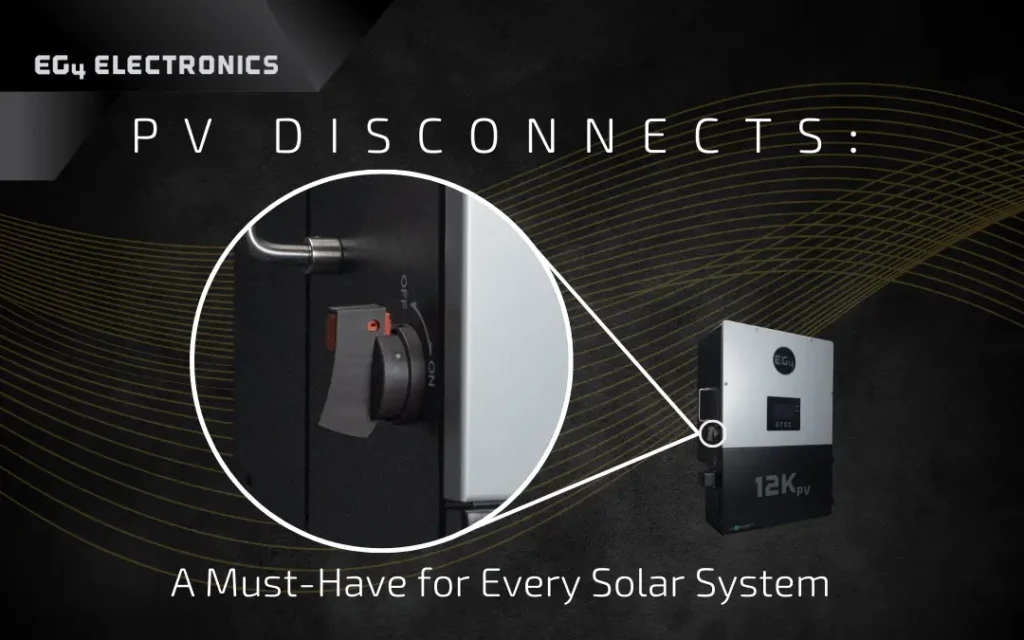Photovoltaic (PV) disconnects are key components that keep solar energy systems safe and efficient. In this blog, EG4 Electronics explains what a PV disconnect is, why it’s crucial for safety and maintenance, how it meets codes and standards, and examples of its importance in real-world situations.
What is a PV Disconnect?
A PV disconnect is a switch that disconnects a solar photovoltaic system from the DC power generated by the array. It acts as an isolation point, allowing the safe interruption of the PV circuit. This is crucial during maintenance, repairs, and emergencies, ensuring the system can be safely isolated.
Safety and Maintenance
PV disconnects are vital for safety, protecting people and equipment. In emergencies, technicians or first responders may need to work with the system without the risk of live electricity. A PV disconnect allows the system to be safely turned off from one central spot, preventing electrical shocks or fires.
Routine maintenance and repairs are safer and easier with a PV disconnect. Technicians can isolate the system from power generation, reducing the risk of shock or short circuits. Placing the disconnect in an accessible location improves efficiency and reduces downtime.
Compliance with Codes and Standards
The National Fire Protection Association (NFPA) requires PV disconnects in solar power systems. The disconnect must be able to isolate the PV system completely, protecting users and equipment from electrical hazards. It should also be clearly labeled as a “PV system disconnect” with a warning about potential electrical shock.
PV disconnects are designed to cut off both the positive and negative sides of the PV circuit, as required by the National Electrical Code (NEC). This ensures maximum safety for anyone working on or near the system.
PV disconnects are installed at key points in the solar power system to safely isolate the inverter from live sources. Proper installation and use help the system operate safely and comply with regulations. Always check with local authorities to determine specific requirements.
Case Studies and Examples
Several real-world cases show the importance of PV disconnects. For example, a solar installation without a PV disconnect experienced a fire due to an electrical fault, which could not be quickly isolated. In another case, a PV disconnect allowed technicians to safely perform maintenance on a large solar farm without shutting down the entire system, highlighting its safety and efficiency benefits.
For more information about PV disconnects, take a look at EG4’s white paper on this topic.

